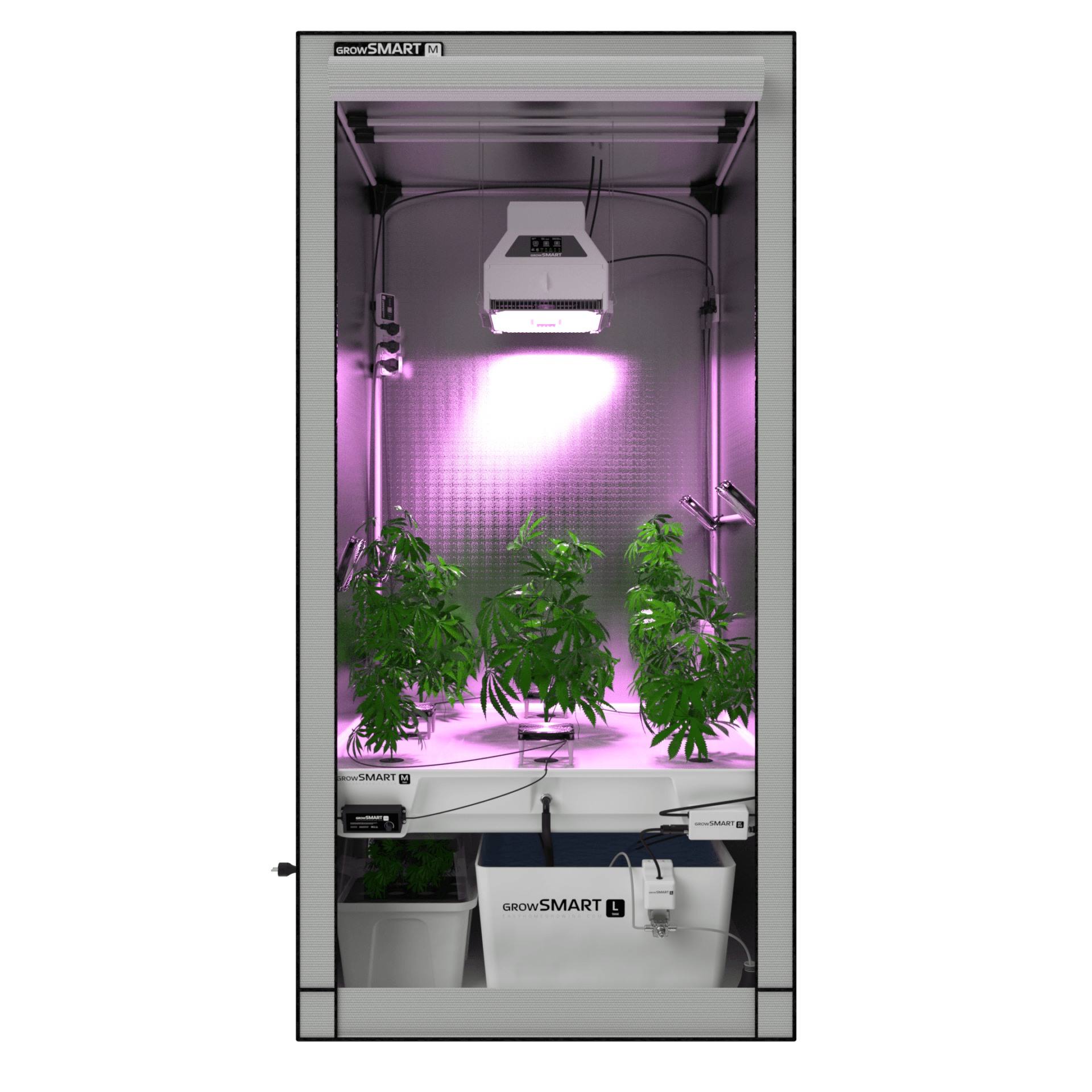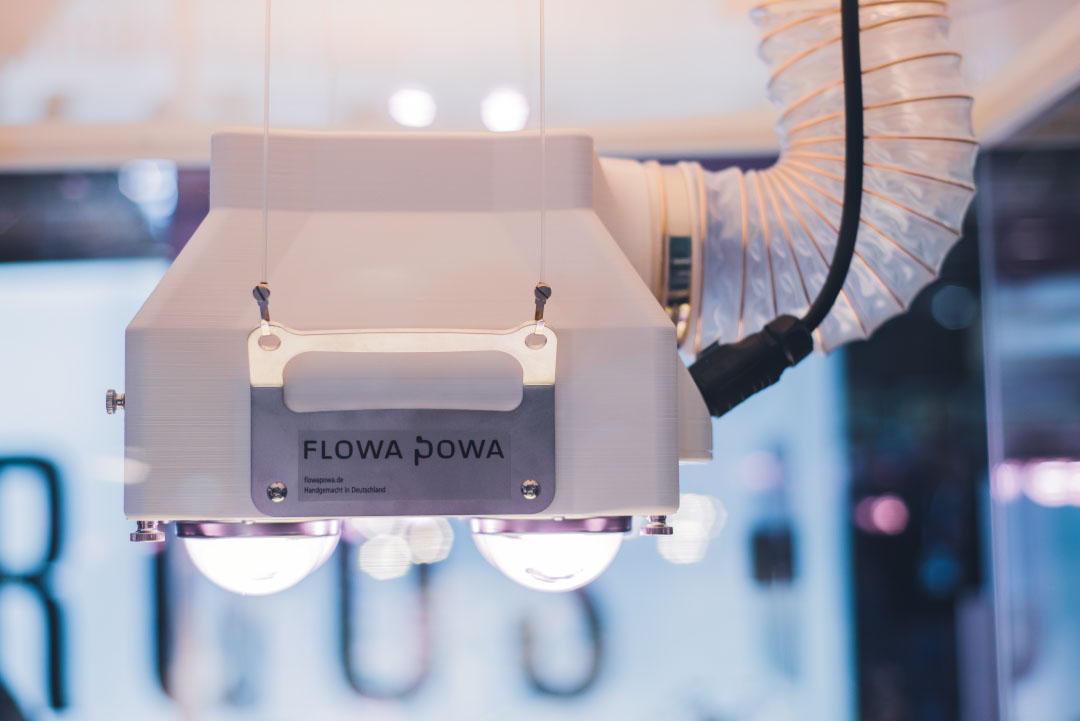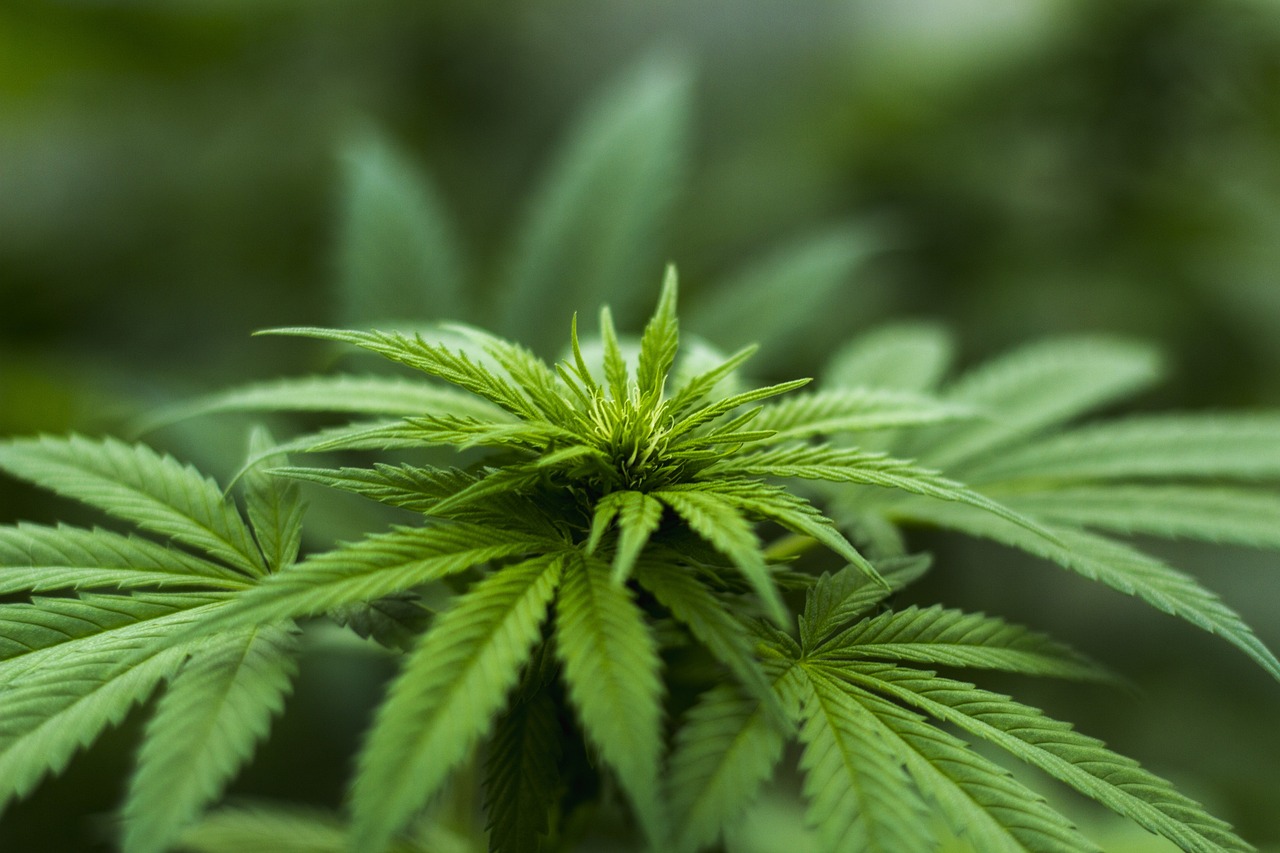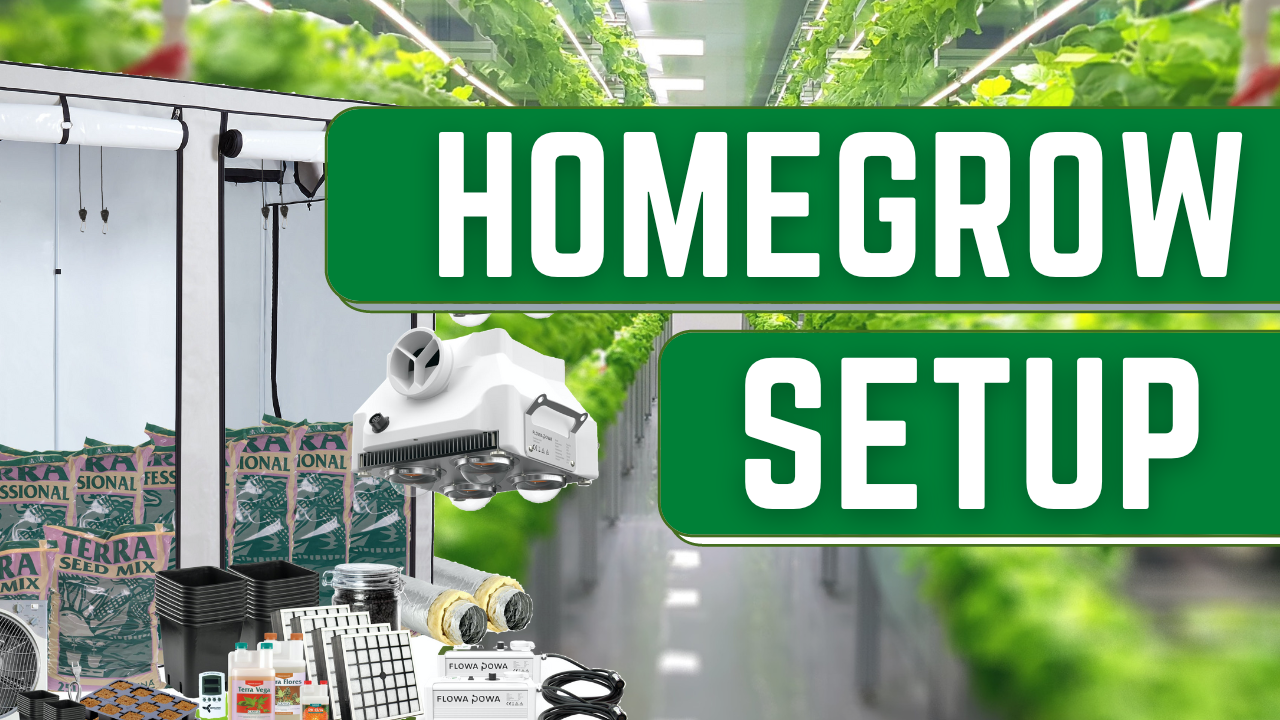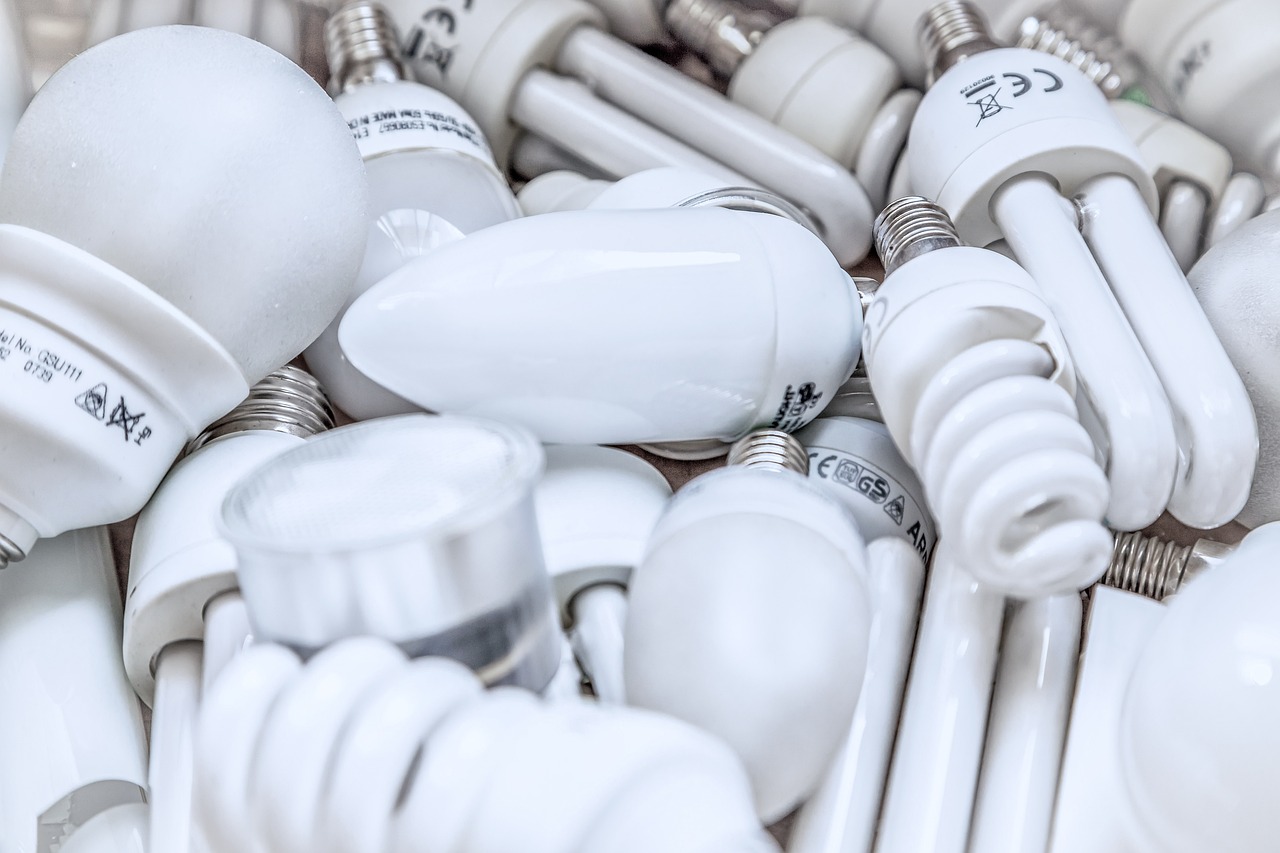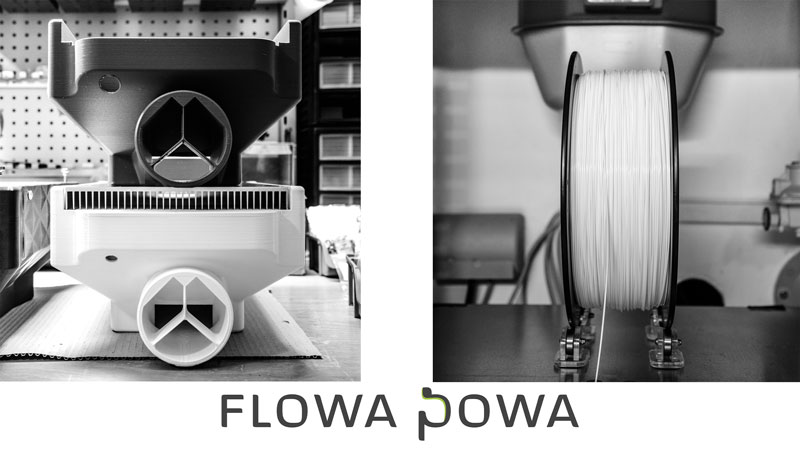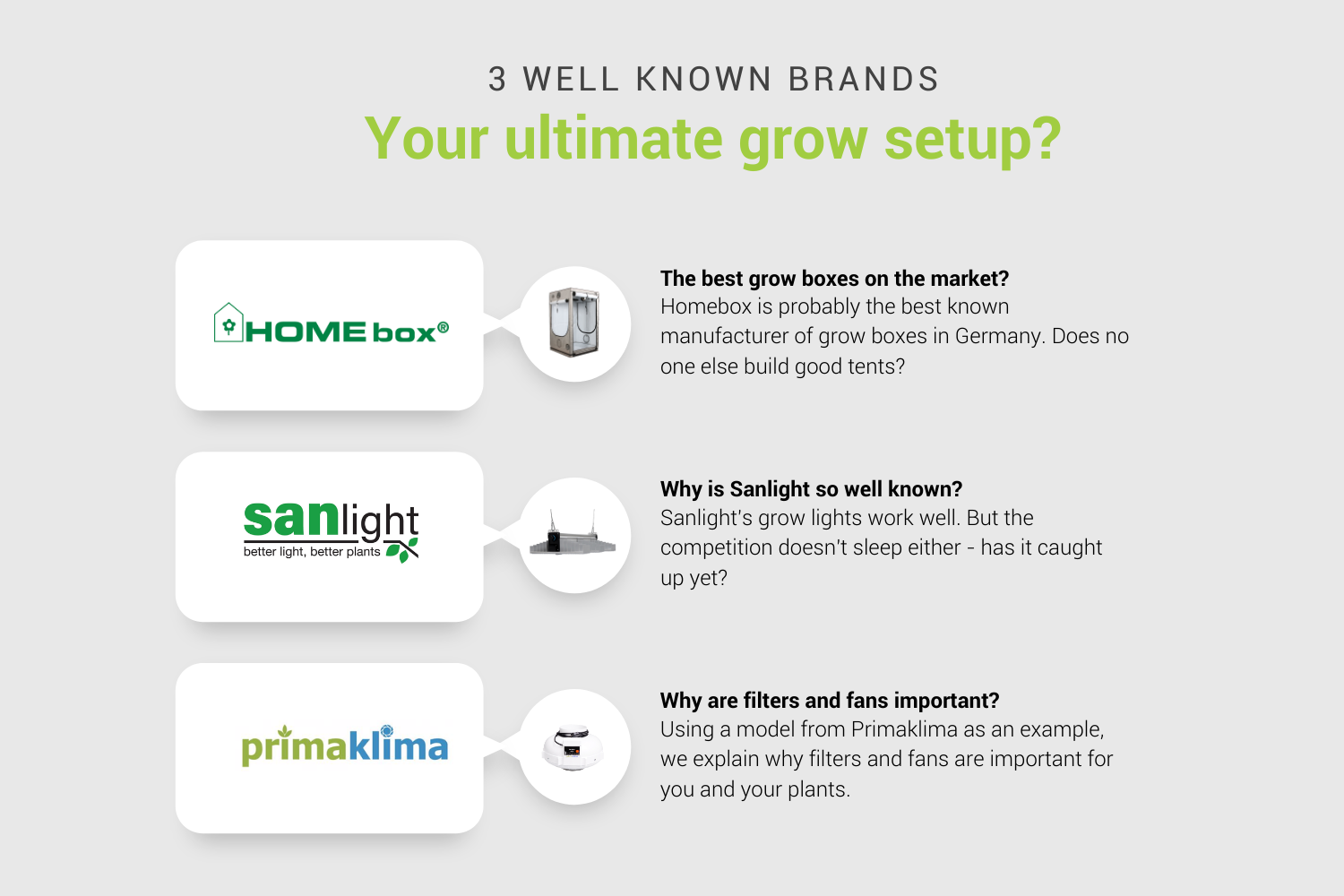6 reasons why LED growlights are better compared to other growlights!
Here you’ll learn:
You want to grow successfully indoor and are now thinking about which sodium vapour lamp is the right one? Or you swear by metal halide lamps and are already comparing the best models with each other. Then we have to disappoint you. The old guard of artificial light sources has served its time. Although you can still achieve solid growing success with them, you want to make your grow and the use of your resources as efficient as possible. This is where LED lamps come into play. They are the new gold standard among grow lights. The huge leap in technology that these lights have made in recent years has made them miles ahead of their competitors. But let’s not be too long in discussing this and take a look at what makes LEDs so special and why they are considered to be unrivalled today.
Long story short: everything important in a quick run-through
- Lower costs: Although the initial purchase price is usually relatively high, the operational costs of LED grow lights are significantly lower than those of “classic” light sources. This means that the (relatively) high purchase price is amortised over the operating time.
- Easy installation: you don’t need a power supply unit, a technician or a degree in electrical engineering. Simply plug it into the power socket and you’re done – Plug n’ Grow.
- Long service life: The service life of LED luminaires far exceeds that of the competition. Our FlowaOne achieves approx. 90,000 operating hours, which corresponds to 10 years of continuous operation.
- Better output: LED lamps cover a broader colour spectrum and thus offer better light quality. This has a positive effect on the yield of the plants. Only full-spectrum LED grow lights are even better.
- Lower waste heat: Due to the lower waste heat, the lamp can be placed closer to the plant, which means more space is available. More importantly, there is no need for an elaborate cooling system as with HID (sodium vapour/metal halide) lamps, which in turn reduces effort and costs.
- Better luminous efficacy: LED luminaires are currently the most efficient light sources on the market. The luminous efficacy of light bulbs is 2% (i.e. only 2% of the energy used can be used as light), sodium vapour lamps come to approx. 30%. LED grow lights achieve an average of approx. 85%. That is simply undefeatable!
That should be enough to show that there is currently no way to bypass LED growlights. If you are still not convinced, you are welcome to read the whole article. In the following, we will go into the individual points once again and show why LEDs literally outshine their competitors. But enough of the bad word games – let’s finally get down to business.
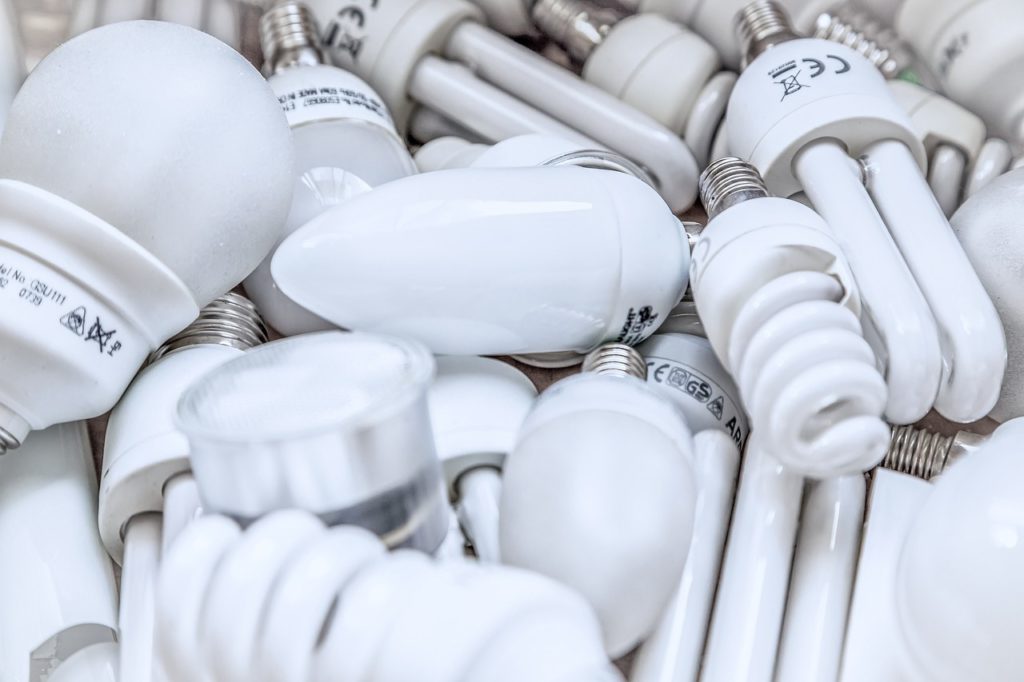
1. Lower costs
There are a lot of costs involved in an indoor grow. A good growing tent is not cheap and the costs for seeds, pots and soil are certainly not to be neglected. The biggest cost, however, is probably the light supply. Not only the purchase price, but more importantly the running costs are an ongoing item that will quickly drive up the cost of your project. Electricity is expensive, and while in the best case you only have to buy your devices and equipment once, the energy consumption accompanies you throughout your entire grow.
This is the big advantage of LED grow lights. Although the purchase price is quite high in most cases, it will pay for itself over time due to the lower operating costs of these lights. Various sources speak of energy savings of up to 70% compared to “classic” light sources such as sodium vapour lamps. Of course, this figure always depends on the quality of your grow light. But one thing is certain: LEDs are definitely more energy-efficient than their competitors.
Connect with other growers on Telegram!
Even if the high purchase price may put you off at first. Keep in mind that LED growlights are much cheaper in the long run. In addition, you don’t need a power supply unit or a complex cooling system, which further reduces your electricity costs. A clear advantage of LED plant lamps that you should not underestimate!
2. Easy installation
The future is called Plug n’ Grow! Installing LED Growlights is really easy and quick. Simply hang up the lamp and plug it into the socket. A ballast, a complex cooling system or an additional timer are usually not needed. Choosing the FlowaOne makes it even easier: here, all important components are combined in one system. Timer, fan, activated carbon filter and a highly efficient full-spectrum plant light that you can easily install in your growing tent. You can’t get more Plug n’ Grow than that!
While it’s not rocket science to install other grow lights, choosing LEDs will help you focus on the really important things about your grow. Instead of selecting, comparing and checking the compatibility of several components, you can make your life much easier.
3. Long lifetime
The service life of LED growlights virtually eclipses that of their competitors. The often used sodium vapour lamps, for example, have an average life of about 3000 hours. After three to four growing cycles, that’s it. Then the lamp has to be replaced – which means: new costs and again a new installation. Now imagine that the lamp loses its luminosity in the middle of the growth phase or the model used is not available for a new purchase at the moment. Of course, this is only hypothetical, but you should take these points into consideration.
LED luminaires are far ahead of their competitors in terms of lifespan. Our FlowaOne, for example, has an average life of 90,0000 operating hours, which is equivalent to about 10 years of operation. So you don’t have to worry about the luminosity diminishing or having to buy a new lamp during your grow.
4. Better output
The most important issue is, of course, the yield. For a long time, LEDs were smiled at on the market. Below-average yield, few vigorous flowers or no aroma were long said. All these criticisms have now been disproved. Studies suggest that they can contribute to the development of more terpenes and cannabinoids. Studies have also shown the increased development of nodes, i.e. flower spikes. It is estimated that you can expect up to one gram per watt of output. In exceptional cases, it can be somewhat more. This means that LED luminaires are in no way inferior to the competition! If you now also use so-called full-spectrum LED Growlights, you take a further step towards maximising yield. As these plant lamps can imitate natural sunlight very well and also provide the peaks in the colour spectrum necessary for optimal growth of your plants, the supply of the plant with light energy can only be optimal.
Now, of course, it depends on your own abilities to maximise the other parameters of your grow. If you adjust them all optimally, you will also achieve optimal results! With the decision for LED, or even better full spectrum LED grow lights, you have already taken a big step towards bringing the light supply to your plants to an optimal level.
5. Lower waste heat
This has several advantages for cultivation. Firstly, you can reduce the distance between the Growlights and the plants due to the lower waste heat. You want to work as efficiently as possible, so any space saving is welcome. You also reduce the risk of your plants being damaged by too much heat. Many “classic” lamps get very hot, which can have a negative effect on the development of your plants. In addition, a complex cooling system is necessary, which in turn increases the costs and installation effort for you.
This already leads to the second advantage. Due to the low waste heat of LED Growlights, you usually do not need a complex cooling system. That saves twice! Of course, cooling systems have to be purchased first and consume additional electricity, which adds to the operating costs of your lamps. In addition, you have to install the cooling system. As a result, you will have less space available for your grow.
6. Better light output
Due to the better luminous efficacy of the LEDs, the lamps work more efficiently and economically. “Classic” grow lights have a luminous efficacy of 30% to a maximum of 50%. This means that only this percentage of the energy used is converted into light. The remaining energy is converted elsewhere, for example into heat.
With an average of 85%, the luminous efficacy of LED grow lights is very impressive. This means you can make your grow much more efficient and not waste so much energy. After all, you are paying for electricity so that your plants are supplied with light and can grow well. If you now lose more than half of the electricity costs due to the inefficiency of a lamp, this is not only very annoying, but also really sad. LED grow lights provide a remedy here and are also ahead of the game.
Full-spectrum LED growlights are the Ferrari among artificial light sources.
This should make it clear why LEDs have become the new standard in the artificial plant lighting market. Only the so-called full-spectrum LED lights are better. They have all the advantages of the “normal” LEDs. The only difference is that their broad light spectrum makes them even better – an upgrade, so to speak. They imitate sunlight very closely and provide the plant with the colour spectrum necessary for photosynthesis. The optimal composition of the individual colour components promotes healthy plant growth and maximum yield. “Classic” light sources usually have a higher concentration of a certain part of the colour spectrum. So it is not uncommon to use different grow lights for the growth phase than for the flowering phase. With the use of full-spectrum LED lights, this aspect is eliminated. The manufacturers can not only cater precisely to the light requirements of the plants, changing the lamps is also no longer necessary.
Light as a decisive factor for your growing success
In order to successfully grow our plants indoors, we have taken Mother Nature as our inspiration. Simplified, it provides water, nutrients, CO2 and light for the healthy growth of the plant. Our focus today is on light. It stimulates the plant’s photosynthesis, in which light energy is converted into chemical energy. This creates new cells and the plant grows. In the end, healthy growth of the plant ensures the highest possible yield. Goal achieved. Unfortunately, it is not enough to simply expose the plant to some light and hope that it will help it grow well. That would have been too good to be true. It is important that the plant gets the right light.
Because: the more light the plant gets, the more efficiently it can process the nutrients and convert them into growth.
But what is the right light for the plant and how do full-spectrum LEDs manage to provide this light better than other light sources? Let’s take a closer look.
Light ≠ Light: The right light for your plants
First of all, it is important to understand that every plant reacts differently to different aspects of light. But what do we mean by different aspects? Isn’t light simply… light? For this we need to make a small excursion into the physics of light. But don’t panic – we really only want to do it very briefly so that you understand the role of light for your growing success.
Basically, we can say that light has different attributes. One is the wavelength (what kind of light?) and the other is the intensity (how much light?). The quality (What?) and quantity (How much?) of the incoming light is crucial for the growth of the plant. In order to make these two aspects more understandable, they will be looked at in more detail below.

Wavelength of light (quality)
Light can be counted as electromagnetic radiation. There are different types of electromagnetic radiation that differ only in their wavelength. You can think of it like this: Electromagnetic radiation moves through space in waves and depending on how long (stretched) or how short (compressed) these waves are, this electromagnetic radiation has different attributes. The wavelength is always given in nanometres (nm). For example, gamma or X-rays are very short wavelength, in the range below 380 nm. Infrared or radio waves are very long-wave, in the range above 780 nm. In between is the spectrum that we humans perceive as visible light. Depending on the wavelength, we see a different colour of light.
The colour temperature of the light
So how do the different colours of light come about? Electromagnetic radiation has different attributes depending on the wavelength. If this radiation of a certain wavelength hits photosensitive points, certain effects are triggered. In humans, this is the retina of the eye. If, for example, electromagnetic radiation in the range of 400 nm hits the retina, we see the colour blue. If radiation around 700 nm hits our retina, we see the colour red. The light emitted by a light bulb, for example, consists of many different colour aspects. Depending on which aspects predominate, we tend to see a colder or a warmer light. This is called colour temperature.
In plants, the photosensitive point is essentially the chlorophyll. As we have already learned, chlorophyll converts light energy into chemical energy. The plant forms new cells and grows. Again, different colour temperatures have a different effect on growth. For example, in the growth phase your plant needs rather cold light, while in the flowering phase it prefers rather warm light. Only with the right colour temperature in the right phase can the plant develop optimally and deliver the greatest possible yield.
The colour temperature alone is not very informative about the quality of the light
The colour temperature is given in Kelvin (k) and is usually found on older lamps. It is important to know that the colour temperature only says something about the quality of light to a limited extent. This is because lamps always mix different wavelengths, which then produce the corresponding colour temperature. For example: two lamps with 6500 K each have the same colour temperature of cool, white light. However, lamp A has more blue components in the total light emitted, while lamp B has more yellow and less blue components. Both emit cool white light, but the composition of the emitted light is different for both lamps.
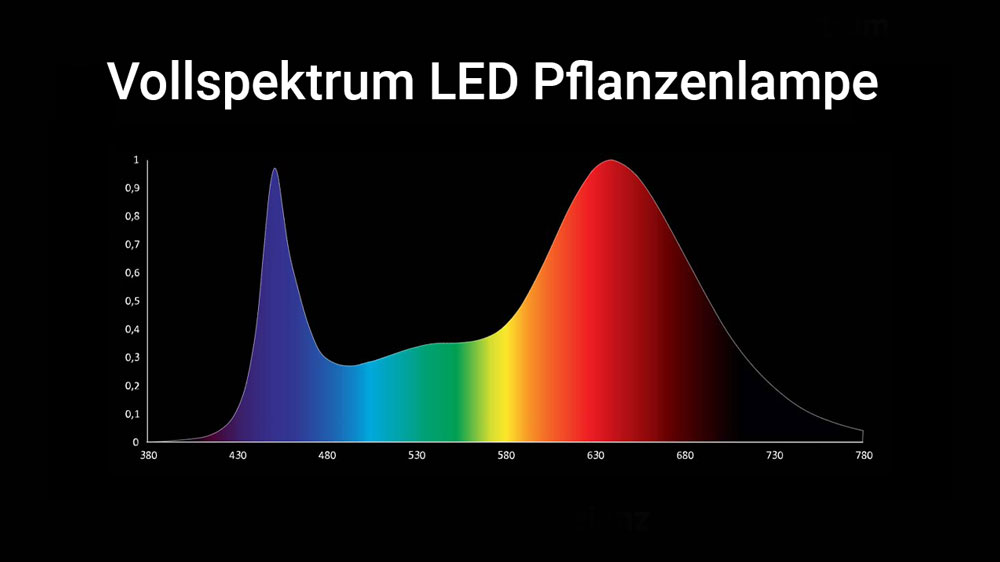
This is perhaps difficult to understand at first glance. If I have white light, why do I have blue or yellow components in the light? Well, mix the colours red and blue in the same ratio on a colour palette. You get a violet colour. Now mix red and blue again on a second colour palette, but this time use a little more red than blue. The result is still violet. This violet is visibly different from the first example, but it is still the same colour. Of course, this is greatly simplified. The colour temperature of light is not only composed of two colours, but of a whole palette of colours. Therefore, the deviation of the colour temperature of the individual components is not so perceptible to the human eye.
The colour spectrum as a better measure of light quality
The totality of the colour components of the colour temperature can be summarised as the colour spectrum. For optimal plant growth, a good compromise between blue and red light is required. In recent years, more and more so-called full-spectrum LED luminaires have come onto the market that very closely replicate natural sunlight. They have a broad colour spectrum designed for optimal growth, with a higher concentration of blue and red components.
That was a lot. But it’s important to understand how full spectrum LED grow lights play to their strengths, especially in colour quality. But there is another aspect of light.
Intensity of the light (quantity)
We really only want to talk about light intensity very briefly. This is not intended to be a scientific article about the effect of light, but for the sake of completeness it must be mentioned that besides the quality of light, the quantity of light also plays a decisive role. What good is a light with a high-quality colour spectrum if not enough of it reaches the plants?
Generally speaking, the larger the cultivation area, the higher the light intensity should be. This is the only way to ensure that all plants receive enough light. Light intensity can therefore also be simply translated as brightness.
More lumens are not always better
With older lamps, the luminous intensity is usually given in lumens. The more lumens the lamp has, the better for the plants, right? Unfortunately, it is not quite that simple. Lumens refer to the brightness perceived by the human eye. But this is mainly in the green/yellow colour spectrum, which is less useful for plants than blue or red colour components. Better here is the PPFD value, which takes into account the entire colour spectrum (relevant for plant growth). This is taken into account by LED luminaires and is usually stated in the product description.
Especially with regard to light quality, it should now be clear why full-spectrum LEDs are so good. The manufacturers pay attention to an optimal ratio between blue and red components of the electromagnetic radiation. Whereas “classic” light sources usually focus on only one portion, full-spectrum LEDs manage the balancing act between optimal conditions here. No more lamp changes and more yield thanks to optimal light quality.
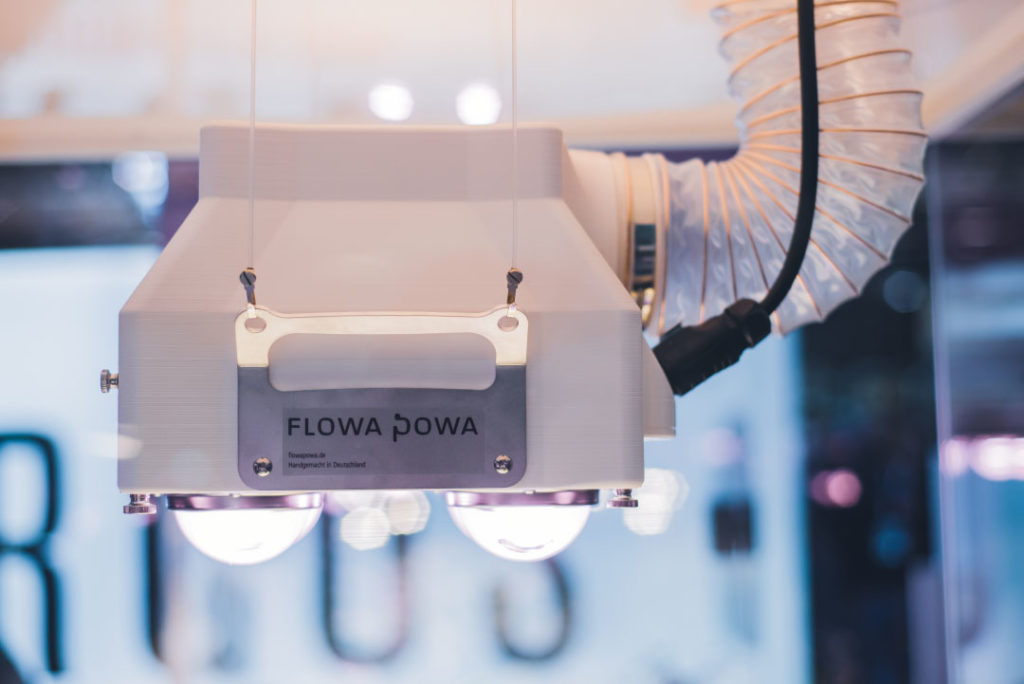
Conclusion
As you can see, LED growlights have replaced the old guard of artificial light sources. Today, no one can ignore the massive advantages of these light sources. The only disadvantage of the high purchase price is not really a disadvantage for us, as the costs are relativised over the operating time. Quality has its price and, after all, you want a high-quality product. As the perfect all-in-one solution, we clearly recommend the FlowaOne. The market-leading efficiency of a full-spectrum LED grow lamp combined with an integrated activated carbon filter, ventilation and many other features. More plug n’ grow is not possible!
